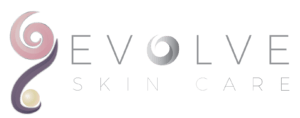The basic treatment principle for acne in TCM is to clear Heat from the appropriate meridian, Zang Fu Organ, or Fundamental Substance, thus removing the underlying energetic cause of the disease.
Some patients with acne may respond well to conventional medical treatment, and some respond well to Traditional Chinese Medicine. In general, conventional therapy is less time-consuming, although some patients may experience side effects that may limit its effectiveness or practicability. Traditional Chinese Medicine treatment is a reasonable option for patients who respond poorly to conventional medical treatment. While acupuncture can provide symptomatic relief, herbal medicine is the preferred treatment modality.
Acne & Acupuncture
Acupuncture treatment for acne involves both distal and local points. Lung Heat patterns may be treated by using points such as Large Intestine 11 (Qu Chi), Large Intestine 4 (He Gu), and Lung 5 (Qi Ze).
Stomach Heat patterns may respond to acupuncture points such as Large Intestine 11 (Qu Chi) and Stomach 44 (Nei Ting).
Toxic Heat patterns may be treated with points such as Du 14 (Da Zhui) and Large Intestine 11 (Qu Chi).
Blood Heat patterns may be treated as with Toxic Heat, with the addition of Spleen 10 (Xue Hai).
Damp Heat patterns may be treated like Stomach Heat patterns with the addition of points such as Spleen 9 (Yin Ling Quan).
The lesions themselves may be treated by a technique known as “surrounding the dragon,” in which needles are placed superficially about one inch apart to surround the area where the acne is present and retained for about 20 minutes.
Ear acupuncture, in points corresponding to the Lung, Stomach, and Endocrine system, may prove useful as well.
Acne & Herbal Medicine
Herbal medicine focuses on Heat according to the differential diagnosis, while reducing the inflammation and attempting to prevent the formation of new lesions. A combination of herbal medicines taken internally and an externally applied solution is preferable.
Lung Heat may be treated with formulas of herbs such as Pi Pa Ye (Folium Eriobotryae Japonicae) and Sang Bai Pi (Cortex Mori Albae Radicis).
Stomach Heat may be treated with proper supervision using combinations of purgative herbs, such as Da Huang (Radix et Rhizoma Rhei) and Mang Xiao (Mirabilitum).
Toxic Heat may be treated with combinations such as Jin Yin Hua (Flos Lonicerae Japonicae) and Lian Qiao (Fructus Forsythia Suspensae).
Blood Heat may be treated by using herbs such as Sheng Di Huang (Radix Rehmanniae) and Mu Dan Pi (Cortex Moutan Radicis).
Damp Heat may be treated with combinations of the herbs used to treat Toxic Heat, along with other herbs, such as Yi Yi Ren (Semen Coicis) and Tu Fu Ling (Rhizoma Smilacis Glabrae), to drain Dampness. The herbal decoction may also be applied to the skin twice a day as a soak to the affected areas, if recommended by a practitioner.
Acne & Qi Gong
Qi Gong is not a major treatment modality for acne in Traditional Chinese Medicine.
Follow Us On
Categories
